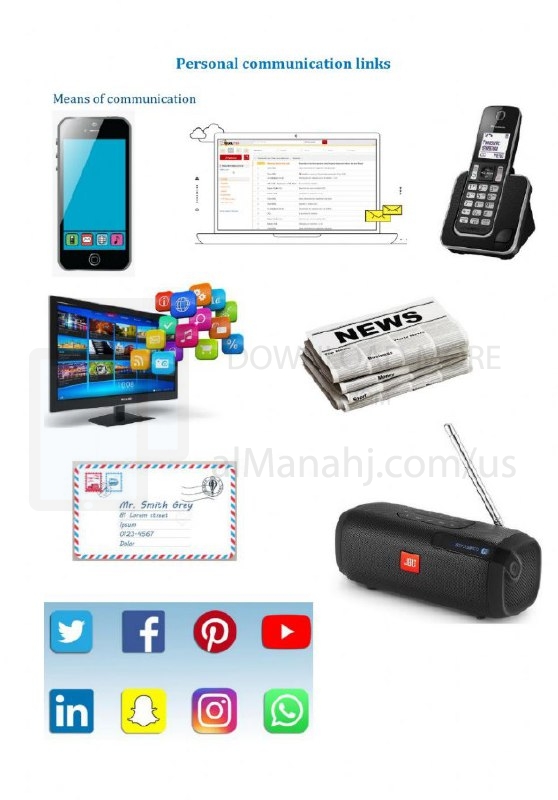| You are here: Almanahj Website ⇒ American curriculum ⇒ 3rd Grade ⇒ Information and comm ⇒ Term 1 | ||
|---|---|---|
WORKSHEET ABOUT Communication Links | ||
|---|---|---|
| Subject: Information and comm | ||
| 3rd Grade | ||
| Term 1 | ||
| Year: 2023/2024 | ||
| Size: 404.5KB | ||
| Number of clicks: 88 | ||
| Publish date:November 14, 2023 | ||
| Added by: Eman | ||
| Last download date: 2024-08-28 14:33:20 | ||
| Updated by: Eman9966 on 2023-11-15 18:26:42 | By: theodor cmooreo | |
| File info: The term "communication link" is broadly used in the context of computer networking to refer to the communication channels that connect nodes in a network. These communication channels can be physical or virtual, and they provide the means for data transmission between devices. Physical Communication Links Physical communication links consist of tangible materials, such as cables or fiber optic lines, that transmit signals carrying data. Some common types of physical communication links include: Twisted-pair cables: These cables consist of insulated copper wires twisted together in pairs, and they are commonly used in telephone networks and Ethernet networks. Coaxial cables: These cables have a central copper conductor surrounded by an insulating layer, a braided metal shield, and an outer protective jacket. They are often used for cable television and high-speed data transmission. Fiber optic cables: These cables transmit data using pulses of light traveling through thin strands of glass or plastic. They offer high bandwidth and low latency, making them ideal for long-distance data transmission. Virtual Communication Links Virtual communication links are logical connections that exist within a network and do not require physical infrastructure. They are created through software protocols and allow data transmission between devices using shared network resources. Some common types of virtual communication links include: Virtual circuits: These links provide a dedicated path for data transmission between two points in a network. They are often used for voice and video conferencing applications. Frame relay: This protocol divides data into frames and transmits them over a shared network, allowing for efficient use of bandwidth. Asynchronous Transfer Mode (ATM): ATM is a high-speed data transmission protocol that divides data into small cells and sends them over a virtual circuit. It is commonly used for multimedia applications. Communication Link Characteristics Communication links are characterized by several important parameters that determine their performance and capabilities: Bandwidth: The maximum amount of data that can be transmitted over the link in a given time interval. Latency: The time it takes for a signal to travel from one end of the link to the other. Reliability: The ability of the link to transmit data accurately and without errors. Security: The ability of the link to protect data from unauthorized access or modification. Selection of Communication Links The choice of communication link for a particular application depends on several factors, including the required bandwidth, latency, reliability, and security. The cost of the communication link also plays a role in the decision-making process. Conclusion Communication links are the backbone of modern computer networks, enabling the exchange of data between devices and facilitating communication and collaboration across vast distances. As technology advances, communication links continue to evolve, offering increasingly sophisticated capabilities and enabling new and innovative applications. | ||
| Downloading link WORKSHEET ABOUT Communication Links |
|---|
|
1699980608.pdf
The file is being prepared for download
|
| File images |
|---|
 |